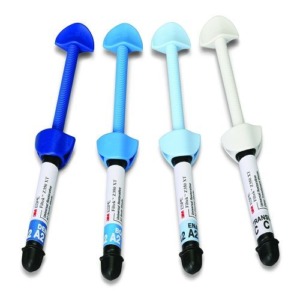Description
Filtek ™ Z350 XT is a dental restorative composite designed for use in anterior and posterior restorations.The kit of restoratives are available in Dentin, Body, Enamel and Translucent shades packaged in syringes and single-dose capsules. All shades are radiopaque. A dental adhesive, part of the kit, is used to permanently bond the restoration to the tooth structure.
Highlights
- A visible light-activated composite
- The restorative is available in a wide variety of Dentin, Body, Enamel and Translucent shades.
- Can be used for direct anterior and posterior restorations (including occlusal surfaces)
- Low-viscosity, radio-opaque flowable nanocomposite
- Filtek ™ Z350 XT Flowable uses the same unique nanotechnology as Filtek ™ Z350 XT Universal dental restorative products which provides excellent aesthetics, unsurpassed polish retention and low wear
Specifications
Filtek ™ Z350 XT Universal and Flowable Restorative is brought out by 3M ESPE using the nanotechnology with the following unique properties:
- Bonded nanofillers are the reason Filtek ™ Z350 XT restorative dental kit has bonded nanofillers help retain its brilliant polish.
- Filtek ™ Z350 XT restorative is proved to be superior by its polish retention because of the patented process used in building the nanocomposite, compared to other composites and microfills.
- In-vitro lab data has shown that the wear resistance of Filtek ™ Z350 XT restorative is equivalent to Filtek ™ XT restorative providing the confidence to use it anywhere in the mouth.
- ‘True’ nanotechnology used in making Filtek ™ Z350 XT nanofill flowable dental restorative personalized kit provides wear resistance similar to enamel.
- A 5 year clinical study has revealed that statistically there is no significant difference between Filtek ™ Z350 XT Universal Restorative and natural enamel.
- The restoration to maintain a smoother surface, meaning the initial impressive gloss will last for years due to the creation of unique clusters of nanometer-sized particles. It is because the nanoclusters shear at a rate similar to the wear of the surrounding resin matrix during abrasion
